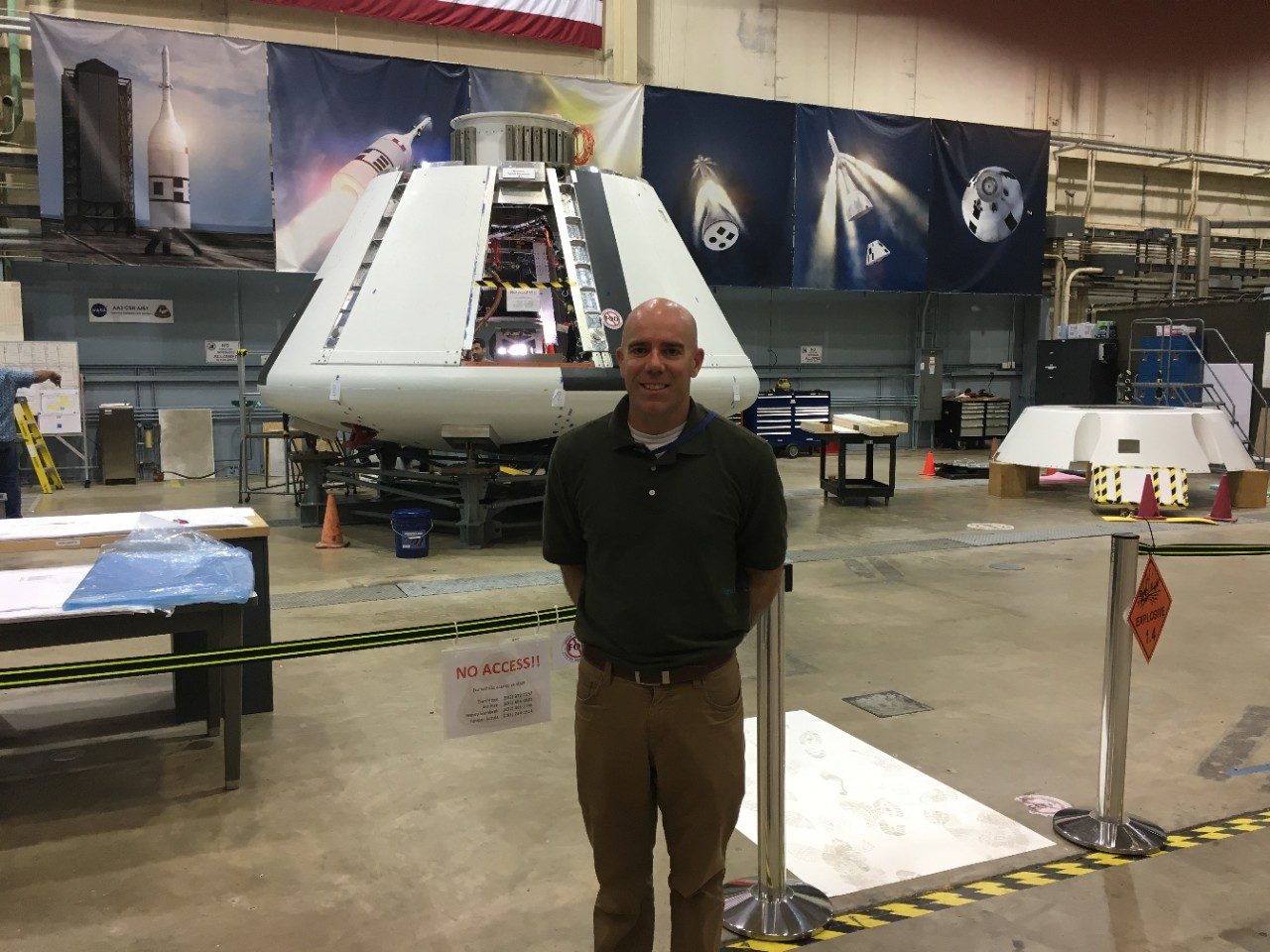Engineering Pyrotechnics for Crew Safety
Tim Pepe, Lockheed Martin Space’s mechanism and pyrotechnics manager for Orion, knows what he wants to see on July 2.
“The vehicle is like a dart going up in the air. We will see the abort motor kick on as an indication that the abort has started.”
Pepe will watch as the second separation occurs with the Orion space capsule’s LAS jettison motor ejecting the uncrewed Orion capsule simulator from the dart-like booster rocket and sending it back down toward the ocean. “That will tell me that we have successfully fired our last retention and release (R&R) mechanism.”
Pepe will be part of the early-morning crowd watching a test version of Orion launch from Cape Canaveral Air Force Station in Florida for the Ascent Abort-2 (AA-2) test. He and his team designed and built separation mechanisms and the pyrotechnic devices for Orion’s Launch Abort System (LAS). The system pulls the crew module away from the launch vehicle to safety if a problem occurs on ascent.
“We are hoping for a clear blue sky,” Pepe said. “It’s going to be a quick launch—less than three minutes—and we will see two separations. The first one will show that the LAS with the crew module has separated from the launch vehicle simulator.”
Once Orion reaches an altitude of about six miles, the ascent abort sequence will begin. The spacecraft will be traveling at more than 1,000 mph and is subject to the maximum aerodynamic pressure of the ascent.
Precision Testing and Astronaut Safety
Pepe’s team will have four critical mechanisms that will function during the AA-2 test. The mechanisms are:
- LAS hatch on the side of the LAS ogive fairing
- R&R device connecting the crew module and service module
- Umbilical “box” that contains the fluid and electrical lines that supply the crew module and service
- LAS R&R that connects the abort system to the crew module
Eight pyrotechnic devices— consisting of separation bolts, frangible bolts and explosive transfer lines — will fire off during the abort test to complete the separations.
The LAS hatch’s job is to remain closed during AA-2. The other devices will separate in a sequence, starting with the crew and service modules umbilical connection.
“Milliseconds later, the crew module separates entirely from the service module via it's R&R, then it goes through the abort sequence where it is simulating getting away from a bad vehicle,” Pepe said. “The LAS R&R would be the last separation to happen, where it would eject the crew module. Then the jettison motor on the LAS takes over and separates the two modules.”
All those devices must withstand tremendous force both during the ascent and the abort. The Orion LAS is the highest thrust and acceleration system ever tested and is the only system of its kind in the world—with the safety of the crew the paramount goal. It allows the Orion vehicle to detect problems and initiate an abort in 300 milliseconds (0.3 seconds)—much faster than any human on the ground or flying on the spacecraft could.
“It’s 400,000 pounds of thrust for the abort motor to pull away from the rocket, so that is the environment that we are trying to design to handle,” Pepe said. “The PA-1 simulated an abort off the launch pad, but this is a high-altitude abort, so it’s the other end of the spectrum. This test will give us some confidence that our mechanisms can hang on during an extremely tough vibration and noise environment.”

Pepe said he’s confident the AA-2 will be a success. “Our team has done a great job,” Pepe said. “I’m excited about it, but I’m more excited to watch my engineers experience this and see their designs get validated. I know the feeling I went through on EFT-1--it was one of my proudest moments as an engineer.”
He’s also encouraged with the progress that NASA’s deep-space exploration Orion project is making. “We hope to get into a cadence where we are launching one of these flights every year,” Pepe said. “After AA-2, we are going to have Artemis 1 and Artemis 2 by 2022. It’s the momentum that we have been waiting for and that’s the exciting part of why I started working on Orion in the first place.”




